Driver’s view: 2017 Sands Horizon 6000
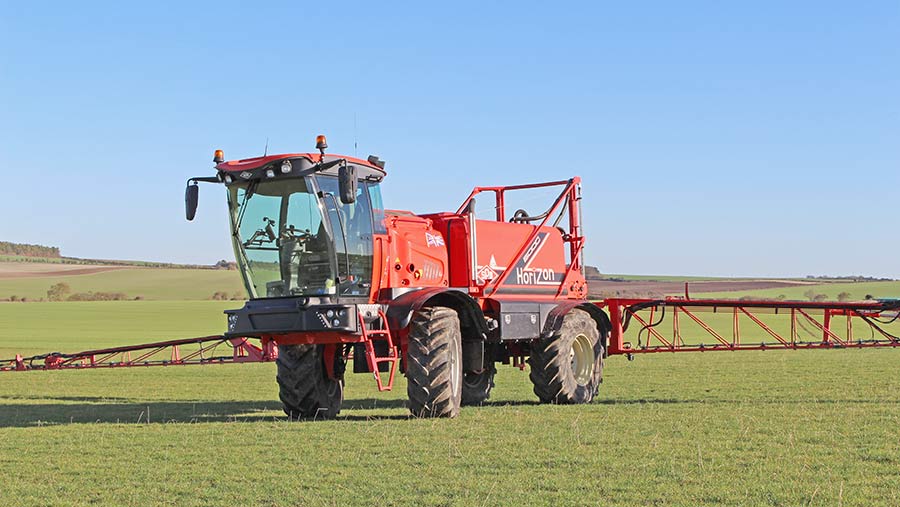 © Edd Mowbray
© Edd Mowbray We asked five operators to run through the good points and bad points of their self-propelled sprayers and explain why they picked them.
This time we’re focusing on British-built machines from Sands, Househam, Chafer, Landquip and Bateman, all with tank sizes of between 4,000 and 5,000 litres.
See also: Kent farmer gives lowdown on 2019 Bateman RB55
See also: Suffolk farmer rates his 2018 Landquip CV228
See also: Driver’s view: Househam Predator

Paul-Eaglen
Sands Horizon 6000
- Operator Paul Eaglen
- Company AE and WA Farr, Newnham Manor Farm, Baldock, Herts
- Farm size 900ha
- Soil type White chalk to heavy clay
- Crops grown Wheat, oilseed rape, spring barley, sugar beet
What sprayer are you using?
I’ve been on the farm nearly 40 years and all of our self-propelled machines have been from Sands. This is now our fourth SP model and we keep them for between eight and nine years.
The one I traded in was a 4,000-litre, 24m model, but we decided to go bigger to increase timing accuracy and I’ve also taken on more liquid nitrogen spraying.
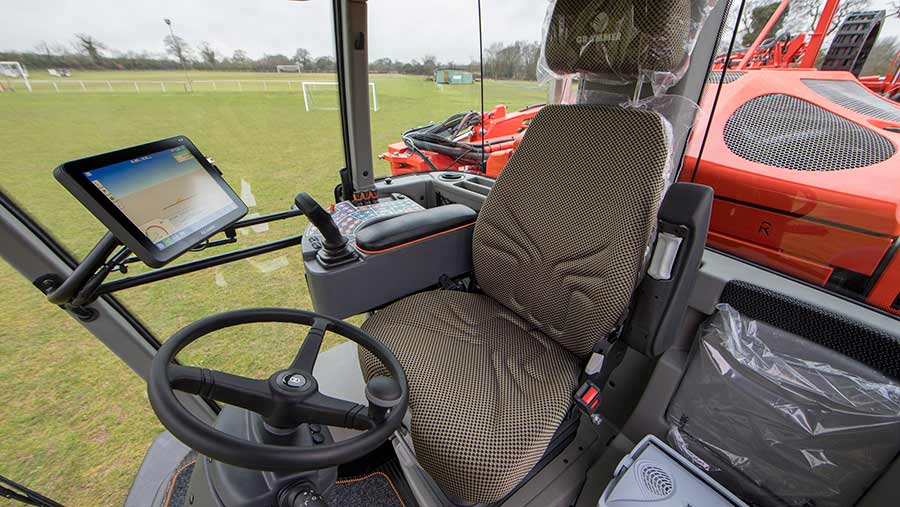
© Farming Photography
We always compare Sands’ offering with other machines before buying, if only to feel that we aren’t being left behind by technology.
We did seriously consider the Amazone Panterra – I even went to another farm for half a day to have a good drive of it.
But in the end we stayed with Sands, mainly because of its big tank, the decent back-up and because we know most of the staff there now.
This is the first time we will run a single set of tyres, on advice from Sands. We don’t have row crops anymore – the Michelin Cerexbib 620/70 R30s are reckoned to give the best of both worlds.
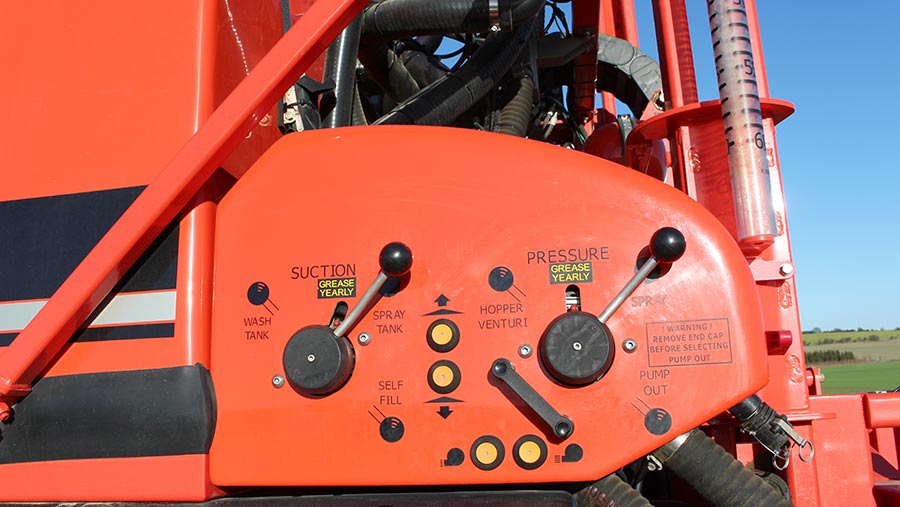
© Edd Mowbray
Machine stats: Sands Horizon 6000
- Price paid £202,975
- Year 2017
- Hours 960
- Engine Deutz 6.1-litre 4-cyl tier4
- Power 242hp
- Transmission Hydrostatic
- Road speed 50kph
- Tank size 6,000 litres
- Pump 400 litres/min dual-speed
- Nozzles Hypro Duo React 4+1, single line, with two fertiliser nozzles
- Auto shut-off 24-section
- Boom levelling Norac
- Guidance Trimble Field IQ with RTK
- Boom width 32m
- Wheel sizes Michelin Cerexbib 620/70 R30
- Average daily output 100ha
How has it performed?
So far, I’ve done 960 hours and I like it. New machines always take a bit of adjusting to, but the extra tank volume has proved handy.
My view was that even if I don’t fill it up all the time, fibreglass doesn’t weight much, so it’s worth having the option.
The 3in fast-fill fertiliser inlet is rapid and leaves very little time to do anything else before 6,000 litres is on board, which minimises filling time.
I also like the rear camera, particularly on slip roads where I can see what is happening around me.
The new tyres have caused a few issues as the machine sits higher all year round. Getting in and out of the cab was a bit of a leap and the control panel for filling is now a reach.
But Sands has been quick to replace the steps for some slightly lower ones and I think it may now be standard on all machines fitted with the Cerexbibs.
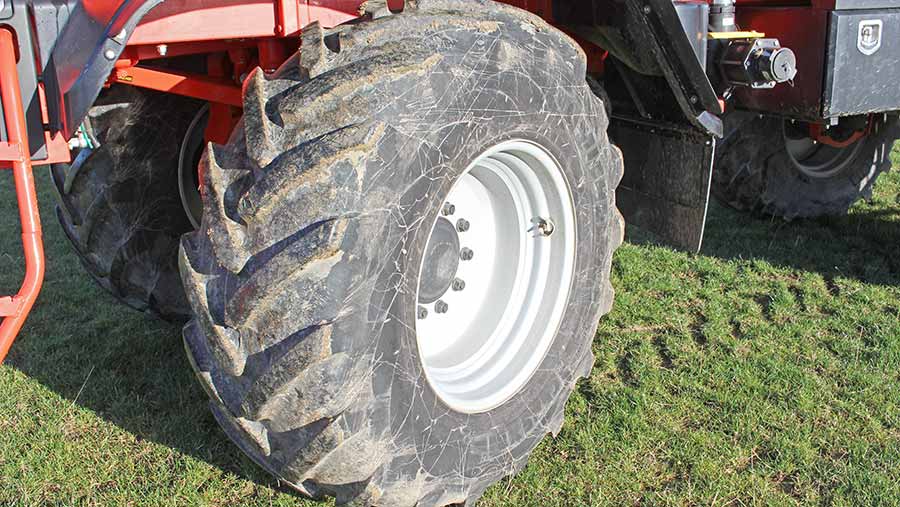
Cerexbibs tyres
The control panel is hydraulic on our model but, in hindsight, we should have gone for the electric option. The levers have become stiff and, with the extra height, can be troublesome to turn.
Sands has done away with the old-style sliding door we had on our old model because it didn’t seal tightly enough.
The new version opens outwards and helps meet Cat 4 filtration standard, but I much preferred the previous version.
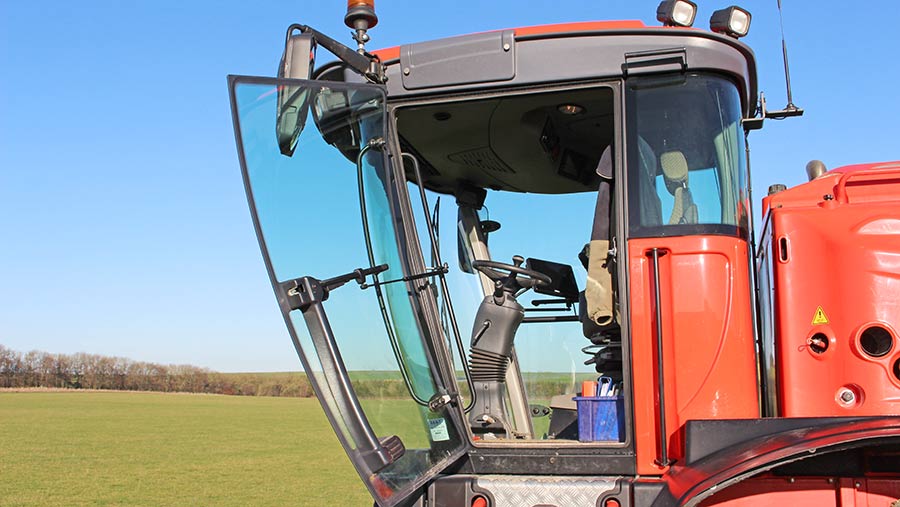
Awkward shaped door on Sands Horizon sprayer © Edd Mowbray
One thing we didn’t have on the oldie was an induction hopper measure indicator. I found it tedious measuring out chemical into a jug to pour straight in the hopper, but I can now shut off the water, decant the exact amount into the hopper from the can and then open the taps to let it in.
Likes
- Fast-fill 3in fertiliser pump
- Rear-view camera on constantly
- Dealer backup
- Loads of power
Gripes
- Cab door inside gets wet easily
- External sprayer controls are a long reach
- No flat surfaces in the cab
- Tight access for engine maintenance
Major breakdowns?
We’ve only had it for a year and it’s been pretty trouble-free so far. There have been a few issues with the higher tyres, but Sands has been very quick to rectify them with new steps and extended front and rear mudguards to prevent lumps of mud taking out nozzles when folded and travelling on wet soil.
We do all our own servicing on the farm and I have found the access to the Deutz engine is tight to get filters changed.
The centre boom height sensor has been a bit problematic too, but we eventually worked out that the foam cap was filling up with dust and stopping the film sensor from working.
Apparently it’s quite a common issue with these central sensors and is a pain when it plays up in the middle of the field – particularly when trying to sort the flimsy part with dirty hands.
However, the boom is great and pivots from the end of the main sections, rather than from the sprayer’s body.
We’ll probably have another look at sprayer options in five years time, but by then I may be happily retired.

